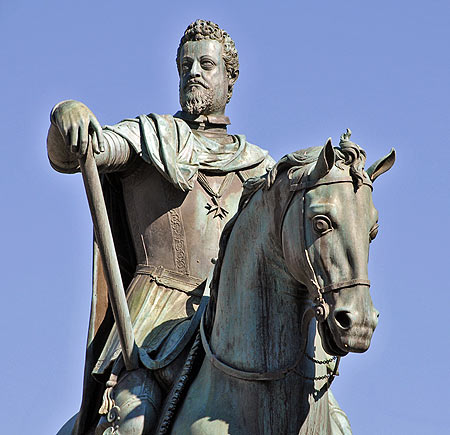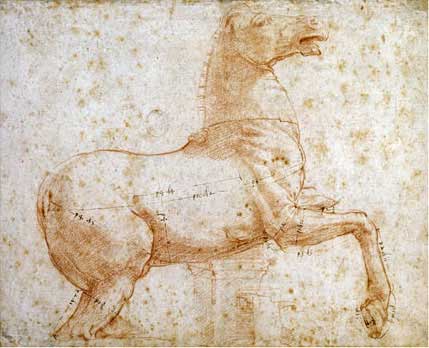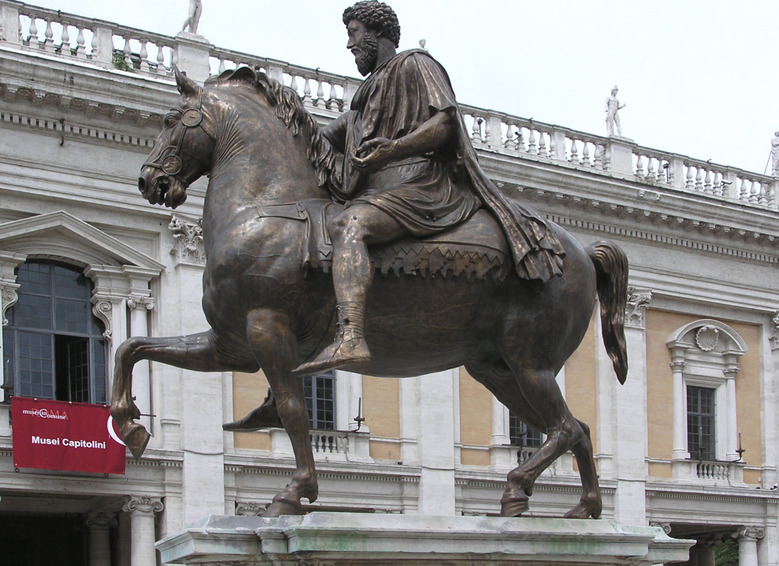Ferdinando de' Medici, Grand Duke of Tuscany 1549-1609
The horse was incidental and was to display its rider.

|
|
Raphael (Raffaello Sanzio da Urbino) 1483-1520
Study of One of The Quirinal Marble Horses
Old masters studied proportions (see his measurements).
The huge Roman marble horses originally situated on Quirinal Hill in Rome were too large to loot.

|
|
Bronze Equestrian Statue of Marcus Aurelius, 2nd Century A.D.
One of the oldest surviving bronze equestrian statues, it became the model for the equestrian statues of the Renaissance. It was common practice for invading armies to melt down bronze statues as loot, but this one survived thanks to the Catholic Church.

|
|